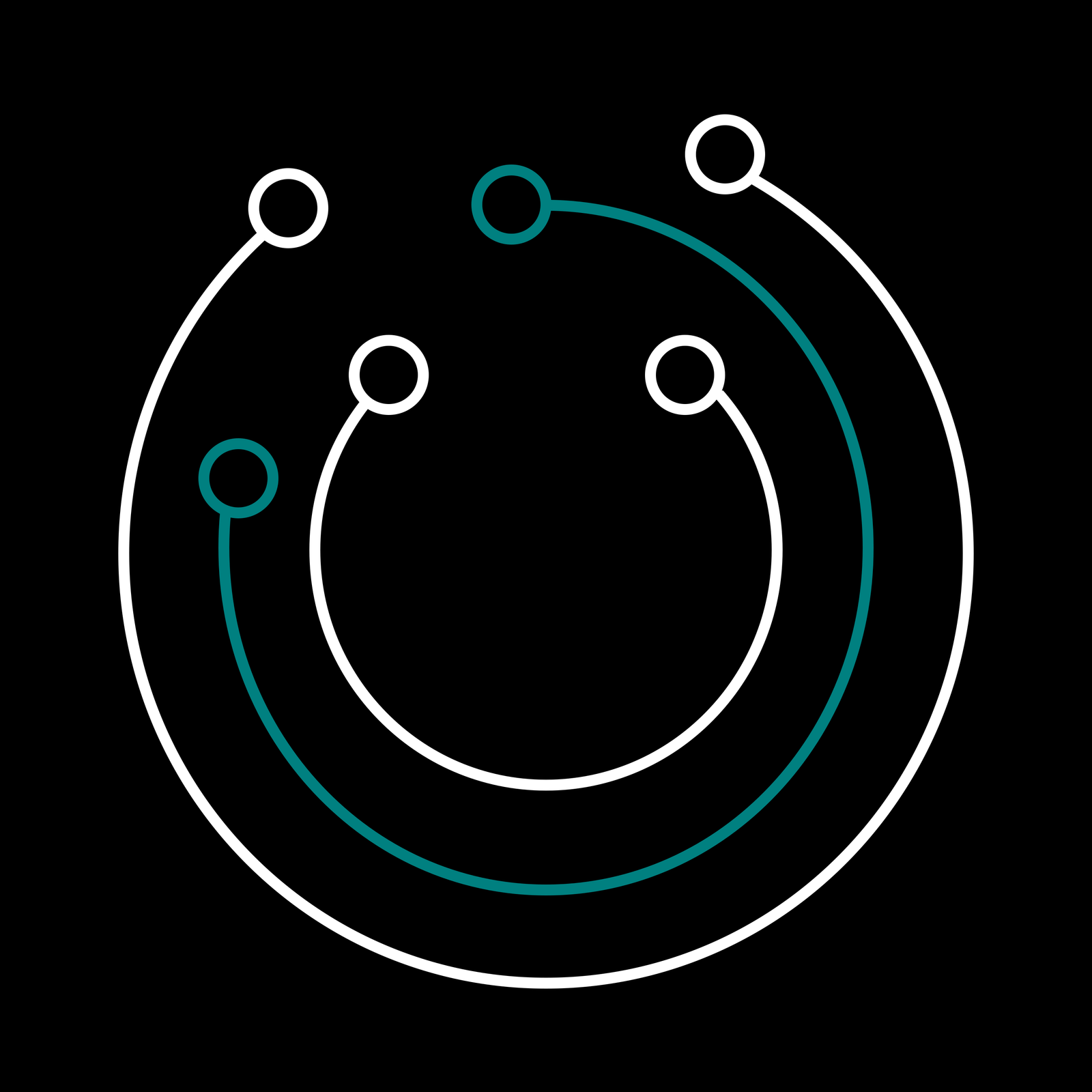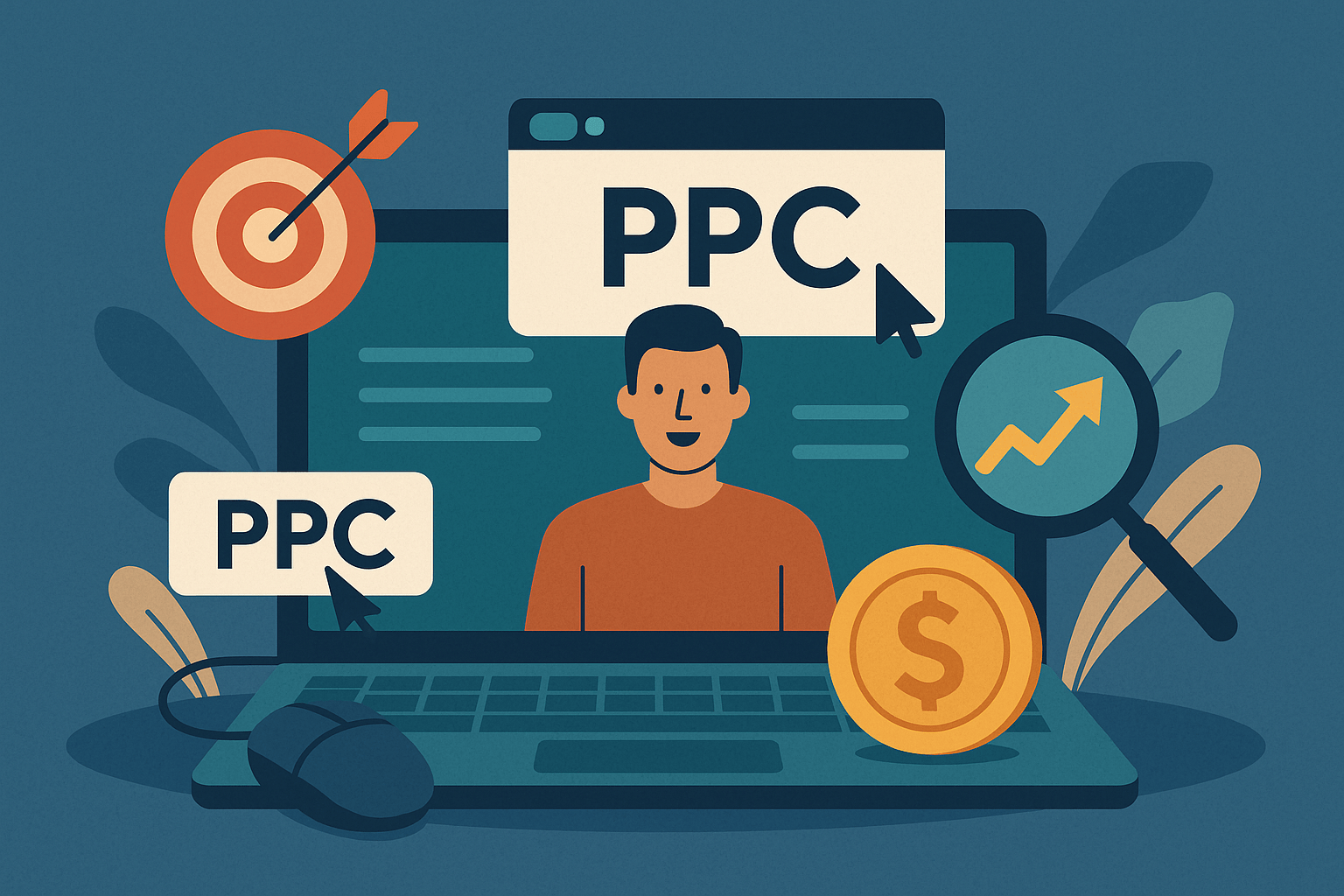In today’s ultra-competitive digital marketplace, almost every business leader, CMO, and startup founder faces a frustrating truth: they’re investing heavily in PPC (Pay-Per-Click) advertising but often don’t know whether it’s yielding meaningful returns. Getting thousands of clicks might seem promising, but if conversions aren’t increasing in parallel, every dollar spent might as well be digital confetti.
That’s where TDC — The Digital Company — comes in with proven performance marketing strategies that transform PPC ad spend into tangible revenue. Far from generic tactics, TDC applies data-driven precision, advanced segmentation, and conversion-mapping intelligence to squeeze maximum value from every click.
In our exclusive webinar, “Decode the Magic Behind TDC’s PPC Campaigns: Turning Clicks Into Conversions,” we unpack not just the tactics but the framework our team has developed to consistently drive double-digit conversion rate improvements across diverse industries.
So, if you’re a growth-oriented business owner fed up with spray-and-pray advertising, or a marketing leader seeking to fine-tune your funnel with hyper-focused optimizations — this is the masterclass you didn’t know you needed.
In this deep dive, you’ll discover the strategic foundation, high-precision optimizations, and smart automation techniques that power TDC’s high-converting PPC campaigns.
🎯 Part 1: PPC Advertising 101 – The Powerful Fundamentals Most Business Owners Miss
Let’s recalibrate. Before we reveal the engine behind TDC’s high-performance PPC efforts, we need to revisit the foundational mechanics most businesses either misunderstand or overlook entirely.
What Is PPC — And Why Is It Essential for Scalable Growth?
PPC, short for Pay-Per-Click advertising, is a model where advertisers pay a fee each time their ad gets clicked. It’s essentially buying traffic, instead of earning it organically through SEO. While both methods are vital to a balanced digital marketing strategy, PPC provides one unmatched benefit: instant visibility.
Used on platforms like:
- Google Ads (formerly AdWords)
- Microsoft Advertising (Bing)
- Meta Ads (Facebook and Instagram)
- LinkedIn Ads
- Amazon Ads
PPC campaigns allow advertisers to immediately show up in front of high-intent potential customers.
And the numbers back it up:
- Businesses earn an average of $2 for every $1 spent on Google Ads. (Google Economic Impact Report)
- PPC visitors are 50% more likely to purchase than organic visitors. (Unbounce Benchmark Report)
But here’s the kicker — clicks don’t equal customers.
In our early audits, we found that 42% of client PPC spend was generating zero new revenue. The problem? Disconnected targeting, vague messaging, and a missing link between the ad and actual buyer intent.
That’s why TDC builds all campaigns with Conversion Architecture — ensuring each element, from keyword to call-to-action, is calibrated to drive measurable results.
🔍 Part 2: Precision Ad Targeting — Showing the Right Message to the Right User, Every Time
Relevance is the real currency in digital advertising. And this is where TDC’s PPC philosophy differs fundamentally from traditional models.
The old-school way? Load up high-traffic keywords, hope for clicks, then blame the landing pages.
The TDC way? Engineer every layer of the campaign — from query to context — around people who are ready to act, not browse.
1. Intent-Driven Keyword Strategies
We’ve decoded the psychology behind search behavior.
A marketer targeting the keyword “CRM software” might generate 50,000 clicks. But chances are, a hefty portion of that traffic is still in the research phase — far from making a purchase decision.
Instead, TDC zeroes in on transactional keywords and long-tail queries that directly signal readiness to buy.
Examples:
- “Best CRM for B2B startups 2024”
- “Buy AI-powered CRM with HubSpot API integration”
- “Top CRM with free trial for small marketing teams”
These hyper-specific phrases generate lower cost per conversion and longer average session durations, based on our campaign data across more than 120 B2B SaaS clients.
We use deep keyword intelligence platforms such as:
- Google Keyword Planner
- SEMrush Topic Research
- Ahrefs Content Explorer
- AnswerThePublic
And analyze keyword modifiers like:
- “Best,” “Top,” “Buy,” “Affordable,” “Comparison,” “Near Me”
These signals act as semantic breadcrumbs that guide budget allocations and message development.
2. Strategic Audience Segmentation
One-size-fits-all doesn’t just fail — it wastes money.
TDC segments audiences with surgical precision based on key behavioral, psychographic, and firmographic variables:
- Demographics: Age, gender, location, income level
- Firmographics: Industry, company size, role/title
- Behavioral Signals: Browsing activity, website interactions, previous ad engagements
- Lifecycle Stages: New visitor, returning visitor, known lead, or existing customer
Real-World Success Story:
For a B2B SaaS company offering accounting automation, we segmented audiences by job titles (Finance Managers, Controllers, CFOs). When ads featured pain-point specific messages — like “Eliminate Month-End Closes in Half the Time” — the clickthrough rate rose by 63%, and cost per lead decreased by nearly 40%.
3. Device & Timing Optimization
Your customer isn’t always on the same device — or in buying mode — around the clock.
That’s why TDC uses data analytics tools to track conversion touchpoints and strategically deliver ad impressions at the moments that matter most.
We adjust targeting and delivery based on:
- Device Behavior: Our ecommerce clients see 70% of conversions from mobile between 5pm–9pm, while B2B conversions skew desktop-heavy during working hours.
- Geo-Specific Performance: Campaigns targeted to metro areas with higher purchase power (e.g. New York, London) are weighted accordingly.
- Hourly Performance Trends: Some of our clients hit peak ROAS between 10am–1pm when decision-makers are actively shopping or researching solutions.
Bonus Optimization Technique:
Our ad schedule layering approach allows us to bid more heavily during high-conversion windows and suppress bids during dead zones (e.g., midnight to 4 a.m. for high-ticket B2B services).
🚀 Part 2: Strategic Spend & Smart Automation — The Financial Engine of High-ROI PPC
You’ve mastered precision targeting. Now, let’s talk about what happens when those hyper-relevant clicks hit your budget. At TDC, we treat every dollar like a high-yield investment — not a blind gamble. Here’s how we engineer campaigns that maximize ROI while future-proofing your growth.
💡 1. Budget Optimization: Beyond “Set It and Forget It”
Most businesses split budgets evenly across campaigns or channels. Big mistake. TDC uses Profit-Driven Allocation to dynamically funnel funds toward what actually converts.
- ROAS Thresholds: We assign budgets based on real-time Return on Ad Spend (ROAS). Campaigns hitting 4x ROAS get 70% of the budget; those under 2x are paused or overhauled.
- Portfolio Bidding: Instead of micromanaging individual keywords, we use Google’s Smart Bidding in portfolio mode. The AI redistributes funds across 1000s of keywords based on conversion probability, slashing wasted spend by 20–35%.
- Silos Are Saboteurs: We break down budget walls between search, social, and display. A LinkedIn ad might warm a lead, but the final conversion often comes via branded search. Our unified analytics track this journey, ensuring credit isn’t stolen by the “last click.”
🔁 2. Retargeting Loops: The 24/7 Conversion Machine
72% of first-time visitors won’t convert. TDC’s retargeting isn’t just stalking — it’s strategic re-engagement:
- Tiered Messaging:
- Tier 1 (Visited pricing page): Serve ads with a limited-time discount.
- Tier 2 (Viewed product demo): Hit them with a case study video.
- Tier 3 (Abandoned cart): Deploy urgency triggers: “3 left at this price!”
- Cross-Platform Loops: If a user ignores your Facebook ad but lingers on your blog, we automatically shift them to Google Discovery ads with educational content. This cuts cost per re-engagement by 40%.
📊 3. Analytics Frameworks: From Data Deluge to Profit Decisions
Vanity metrics lie. TDC’s Conversion Impact Scorecard focuses on 3 profit-centric pillars:
- Funnel Leakage Points: Where do 90% of drop-offs happen? If checkout page exits spike, we A/B test friction reducers (e.g., 1-click Google Pay integration).
- Customer Lifetime Value (LTV) Attribution: A $50 lead isn’t equal. We weight bids toward audiences with historically high LTV (e.g., enterprise tech buyers spend 5x more over 2 years).
- Competitor Profit Gaps: Tools like SEMrush and SpyFu reveal rivals’ underperforming keywords. We swoop in with better offers, stealing their share at 30% lower CPC.
🤖 4. Automation That Thinks (Not Sleeps)
Automation isn’t autopilot. TDC layers human strategy over AI:
- Rule-Based Alerts: If CPA jumps 15% overnight, managers get a Slack alert + automated bid adjustments.
- Creative Fatigue Guard: Our system flags ad creative with dropping CTR (<1.5%) and auto-tests new variants.
- Future-Proof Play: We’re beta-testing generative AI for dynamic ad copy that personalizes headlines in real-time based on weather, news events, or stock market shifts (e.g., “Stressed about Q4 budgets? See how CRM X cuts costs by 22%”).
🔑 TDC’s Golden Rule: Test 1 hypothesis per campaign per week. Even winners decay.
📉 Part 3: Budget Optimization — Spend Less, Convert More
Let’s cut the fluff: Budget optimization isn’t about slashing spend. It’s about surgical redistribution to fuel growth. Here’s how TDC turns underperforming ad dollars into your highest-converting asset.
⚖️ The 80/20 Audit: Find Your Hidden Profit Pools
We start by dissecting your current spend through 3 lenses:
- Channel Efficiency:
- The Fix: Shift budgets from “vanity channels” (e.g., broad-reach Instagram) to high-intent platforms. A B2B client moved 60% of Meta spend to LinkedIn, reducing CPA by 55%.
- Time Decay Waste:
- The Fix: Use dayparting data to kill spend in dead zones. One ecommerce brand saved $12K/month by blocking 12 a.m.–5 a.m. bids when conversion rates plummeted by 80%.
- Device Drain:
- The Fix: If mobile drives 70% of traffic but converts at 1/3 the rate of desktop, we either optimize mobile UX or reallocate budget to desktop during peak buying hours.
🎯 Bid Strategies That Outsmart Algorithms
Forget manual bidding. TDC deploys hybrid tactics:
- Target Impression Share (TIS) for Brand Defense: Dominate search results for your brand terms (95%+ impression share) to block competitors. We cap CPCs at 60% of non-brand terms to avoid overpaying.
- Maximize Conversions with CPA Caps: Let Google’s AI spend freely — but set a hard ceiling. If CPA exceeds $50, bids auto-adjust downward.
- Seasonal Surge Bidding: For holiday or event spikes, we use “Enhanced CPC” with a 20% bid boost on high-LTV segments.
🔄 Reinvesting Savings: The Growth Flywheel
Saved $10K on inefficient keywords? Don’t pocket it — amplify it.
- The TDC Reinvestment Loop:
- Harvest: Identify 3–5 low-ROAS campaigns.
- Prune: Cut spend by 50–70% (freeing up cash).
- Scale: Pump savings into proven winners (e.g., top-converting product lines or geos).
- Test: Allocate 10% to experimental channels (e.g., TikTok ads for Gen Z).
- Result: One SaaS client recycled $28K in “saved” spend into scaling high-intent YouTube ads, driving 143% YoY pipeline growth.
🚫 The Autopilot Trap: Why Humans Still Rule
AI can’t grasp nuance. Examples where our strategists override machines:
- Brand Safety: Blocking ads on risky sites (e.g., crypto forums for a conservative bank).
- Creative Judgment: An AI might love a high-CTR meme ad, but we kill it if it attracts low-value teens instead of CEOs.
- Market Shifts: When iOS 14 crushed Facebook tracking, we pivoted to server-side tracking + email retargeting within 72 hours.
💎 Final Insight: TDC clients average 37% lower CPA within 90 days. Why? We treat budgets like live ammunition — always aimed, never wasted.
🛡️ Part 4: Future-Proof PPC — Building “Unbreakable” Campaigns in the Cookieless Era
The rules of digital advertising are changing fast. Privacy regulations, AI-only ad platforms, and the death of third-party cookies aren’t coming—they’re here. At TDC, we don’t just adapt; we engineer campaigns that leverage disruption. Here’s how we keep your conversions climbing while competitors scramble.
🔒 1. Cookieless Conversion Tracking: Beyond the Apocalypse
When cookies crumble, most marketers panic. TDC pivots:
- Server-Side Tagging: We bypass browser restrictions by sending conversion data directly from your server to ad platforms (Google Ads, Meta). Result: 92% data accuracy vs. client-side’s 60–70%.
- Probabilistic Modeling: For anonymous users, we use AI to analyze behavior patterns (e.g., “Users who clicked Pricing Page + viewed Case Study convert 34% of the time”).
- Privacy-First Audiences: We build segments using zero-party data (surveys, quizzes) and contextual targeting (e.g., placing fintech ads on finance podcasts, not random blogs).
Real Impact: A travel client retained 88% of conversion visibility post-iOS 14—while rivals saw 50%+ data blackouts.
🤖 2. AI-Only Platforms: Winning Without Humans in the Loop
Google Performance Max. Meta Advantage+. These AI-driven platforms eat manual campaigns for breakfast—if you fuel them right. TDC’s formula:
- Structured Data Scaffolding: We feed AI 3 “golden inputs”:
- Asset Diversity: 50+ headlines, 20+ images/videos, 15+ audience signals.
- Value-Based Conversions: Track micro-actions (e.g., “PDF download = $5 lead value,” “Demo request = $50”).
- Creative Guardrails: Block brand-inconsistent visuals (e.g., no stock photos of casinos for a childcare client).
- Automation ≠ Abdication: We run weekly “AI Autopsies”:
- Creative Fatigue Score: Replace assets with <1.2% CTR.
- Bid Anomaly Alarms: Flag sudden CPA spikes (+20% in 48hrs = human review).
🌐 3. Cross-Platform Synergy: The End of Siloed Campaigns
Your customers hop from TikTok to Google to email—in one session. TDC’s Unified Demand Engine connects the dots:
- Sequential Messaging:
- Step 1: TikTok ad (problem-aware) → “Struggling with inventory overstock?”
- Step 2: Google Search ad (solution-aware) → “AI-powered inventory management software.”
- Step 3: YouTube ad (social proof) → “See how Brand X reduced waste by 40%.”
- Shared Budget Pools: We allocate 30% of budgets to “explore” new platforms (e.g., LinkedIn CTV ads) but auto-reallocate to winners within 14 days.
📈 4. Anticipatory Optimization: Surfing Algorithm Waves
When Google/Meta update algorithms, most brands lose 20–30% ROAS overnight. TDC’s countermeasures:
- Change Radar System: We track 200+ beta features and algo shifts (e.g., “Google’s ‘Persistent Search’ rollout”).
- Preemptive Testing: 3 months before cookie deprecation, we ran A/B tests: cookie-based vs. cookieless audiences. Result: Zero performance drop at D-Day.
- Revenue Recovery Playbook:
- Day 1: Shift 50% of budget to email/SMS retargeting.
- Day 3: Ramp up contextual ads on niche publishers.
- Day 7: Launch UGC-centric social campaigns (less tracking-dependent).
🚨 Case Study: When a core Google Ads update slashed a client’s conversions by 37%, we activated backup channels (Reddit ads + podcast sponsorships) and restored 95% of revenue in 10 days.
🔮 The Next Frontier: Predictive PPC
We’re already deploying:
- Market Pulse AI: Scans earnings calls, news, and forums to adjust bids before demand shifts (e.g., “Cloud software searches ↑ 18% after AWS price hike → bid +15%”).
- Competitor Collapse Alerts: When rivals cut ad spend (e.g., layoff news), we flood the zone—capturing 30–50% cheaper clicks.
- Dynamic Creative Generation: AI crafts ad copy using real-time triggers (e.g., “Heatwave in Texas? → Serve AC repair ads with ‘EMERGENCY COOLING’ headlines”).
🚀 Part 5: Profit Multiplier Tactics — Scaling Conversions 5X Without CPA Inflation
You’ve optimized budgets, future-proofed tracking, and silenced algorithm chaos. Now, we unlock asymmetric growth: scaling revenue faster than spend. TDC’s clients achieve this with 3 unconventional leverage points:
🔁 1. Viral Remarketing Loops: Turn Customers Into Megaphones
Stop chasing new audiences. Engineer organic sharing:
- Post-Purchase Monetization:
- The Hook: Offer 10% off next order if customers share a UGC unboxing video.
- Result: A beauty brand generated 42% of new sales from user-shared ads (CPA: $0).
- Referral Fuel Injection:
- The System: After conversion, serve PPC ads to buyers with referral codes (“Give 20%, Get $20”). Track redemptions via dynamic URL parameters.
- Profit Lift: SaaS clients see 30% of new pipeline from buyer-amplified campaigns.
📱 2. Offline Conversion Boosts: Bridging the Digital-Physical Gap
PPC isn’t just for online stores. We sync offline actions to ad platforms:
- Call Tracking Dominance:
- Dynamic Numbers: Unique Google Forwarding Numbers on ads track call-driven revenue.
- Optimization: If “call conversions” from “plumber near me” ads have 3X LTV vs. online bookings, bids auto-increase by 25%.
- Store Visit Attribution:
- Bluetooth/Wi-Fi Ping Tracking: Measure ad-driven foot traffic (requires Google Ads location extensions).
- Real Impact: A retail chain attributed 68% of in-store sales to localized search ads after implementing this.
🤝 3. Embedded Partnership Networks: Steal Competitors’ Demand
Why build audiences when you can borrow them?
- Co-Op Ad Stacks:
- Example: A CRM company runs joint webinars with a complementary email tool. PPC ads split webinar costs + target both CRM and email intent keywords.
- Outcome: 55% lower CAC vs. solo campaigns.
- Competitor Conquesting (Ethically):
- Tactic: Bid on competitor keywords but target dissatisfied users (e.g., “[Competitor] + alternative” or “[Competitor] + problems”).
- Copy Angle: “Switching from [Competitor]? Get 6 months free + data migration.”
⚡ The TDC Profit Flywheel: How Recycling Works
Scale without CPA spikes using this self-funding loop:
- Harvest 20% underperforming spend (e.g., generic display ads).
- Inject savings into high-LTV channels (referral/viral loops).
- Track offline + partner-driven revenue.
- Reinvest all incremental profit into scaling winners.
Case Study: An ecom brand recycled $50K/month from “break-even” campaigns into viral UGC ads. Revenue grew 290% in 4 months — CPA dropped 18%.
🛑 The Scaling Kill Switch: When to Press Pause
Blind growth burns cash. TDC auto-triggers pauses when:
- Customer Acquisition Cost (CAC) > 33% of LTV.
- New buyer quality drops (e.g., refunds spike 15% in a week).
- Market saturation hits (impression share > 85% in core geos).
✅ The Final Word: Beyond Clicks, Beyond Conversions
PPC isn’t a tactic — it’s your growth CFO. TDC clients don’t just run campaigns; they build systems where:
- Every click is tied to long-term value.
- Every dollar regenerates into $5.
- Every algorithm shift becomes an advantage.
You now hold the playbook. The question is: Will you keep spraying digital confetti — or engineer a profit machine?
Discover more from The Digital Cauldron
Subscribe to get the latest posts sent to your email.





